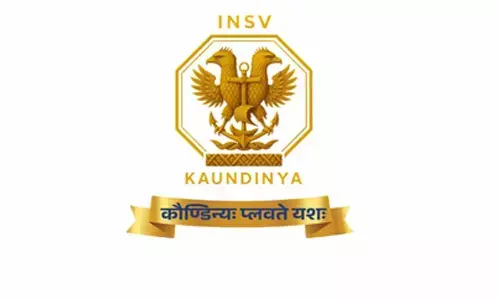Amaravati : Centre to be driving force in new PCPIR policy

Centre to be driving force in new PCPIR policy
The failed PCPIR policy 2007, is being completely overhauled, now making the Centre the main driver to develop India as a global hub for petroleum, chemicals and petrochemicals processing and manufacturing by attracting an investment of Rs 20 lakh crore by 2035
Amaravati : The failed PCPIR policy 2007, is being completely overhauled, now making the Centre the main driver to develop India as a global hub for petroleum, chemicals and petrochemicals processing and manufacturing by attracting an investment of Rs 20 lakh crore by 2035. The very concept of Petroleum, Chemicals and Petrochemicals Investment Region (PCPIR) is being redrawn in the proposed new policy 2020-35 wherein the size of each investment region will be drastically cut down from 250 sq km to 50 sq km, with a specific cluster integration strategy.
Dovetailing the PCPIRs with the National Infrastructure Pipeline could give a major push as otherwise the huge upfront capital costs did not let the proposed projects take off under the policy framed in 2007. Under the new policy, the Centre is expected to provide Viability Gap Funding (VGF) of up to 20 per cent for infrastructure projects in PCPIRs.
It may also provide additional budgetary allocation of 20 per cent for smart and sustainable systems like Zero Liquid Discharge-based Common Effluent Treatment Plant, Integrated Solid Waste Management, real-time environmental monitoring systems and emergency response systems. The VGF could enable each project to catalyse around Rs 2 lakh crore additionally.
A high-level committee, headed by the Andhra Pradesh government's special chief secretary Rajat Bhargava, drafted the new PCPIR Policy 2020-35 and presented it recently to the Union department of chemicals and petrochemicals.
Unlike the PCPIR Policy-2007 that thrust the burden on state governments to develop the petroleum investment regions in their respective states, the new policy mandates the central government to shoulder the bulk of it.
As the Centre envisages implementing infrastructure projects worth Rs 100 lakh crore over the next five years, the Committee suggested that it ensure priority funding of PCPIR projects under the National Infrastructure Pipeline to improve financing options. It recommended that a special provision be made under NIP to prioritise PCPIR projects and reserve necessary funding for their implementation.
The panel, in its report, suggested that the Centre develop a strategy for attracting anchor projects for each of the existing PCPIRs and any proposed new ones.
It recommended that the Centre assist the state governments in identifying an anchor unit for every PCPIR that will act as a catalyst for development of other projects. The Committee, which had the Principal Secretaries of Tamil Nadu, Gujarat and the Secretary of Odisha government as members, recommended: "The Government of India shall provide VGF for state-owned companies or joint venture firms in the oil and gas sector to set up anchor projects in each PCPIR.
It shall provide Project Design and Management Consultancy (PDMC) Fund of Rs 15 crore to each PCPIR to provide funding to state governments for availing technical assistance for master planning, detailed engineering and project management consultancy."
The Committee also recommended that the central government develop a centre for manufacturing excellence in each PCPIR.
"We require at least 10 projects in the next 10 years to grow as an industrial power. The Centre and the states should work as a team to ensure financial closure for these large projects," Rajat Bhargava, who headed the high-level committee, said.
The whole idea, he said, was to rejuvenate investments in PCPIRs through policy interventions and help in building an 'Atmanirbhar Bharat' (self-reliant India). Under the new PCPIR Policy 2020-35, it has been targeted to attract a combined investment of Rs 10 lakh crore by the year 2025, Rs 15 lakh crore by 2030 and Rs 20 lakh crore by 2035 in all the PCPIRs across the country. Under the 2007 Policy, four PCPIRs were proposed at Dahej (Gujarat), Vishakhapatnam-Kakinada (Andhra Pradesh), Paradip (Odisha) and Cuddalore (Tamil Nadu).
However, due to a wide range of issues, ranging from overall infrastructure development to project financing, attracting investment to Visakhapatnam-Kakinada, Paradip and Cuddalore has been challenging, while Dahej succeeded in drawing over Rs 40,000 crore. But now, the Tamil Nadu government scrapped the Cuddalore PCPIR following protests from the local farmers.
The AP government sought to revive the Visakhapatnam-Kakinada PCPIR project last year and lined up two big-ticket projects as anchor tenants at Kakinada with an aggregate investment of over US$ 15.72 billion.
As a new policy is on the anvil, the existing PCPIRs will now be required to revise their Development Plans (DPs) in accordance with the proposed interventions.

















